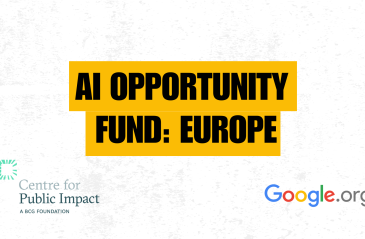
The power of storytelling in climate leadership

New @BCG report 'Winning Back the Future' argues gov-sponsored NRICs can play a central role in championing agendas to foster emerging tech
Share article'If govs are to stay relevant to citizens, they need to be responsive to citizen’s needs, while also building their trust' @DrAkramAwad
Share articleUsing examples of @FCAI_fi @AISingapore @DubaiFuture & more, @BCG report states NRICs can drive tech for the advancement of nations
Share articleWe put our vision for government into practice through learning partner projects that align with our values and help reimagine government so that it works for everyone.
“Disrupt or Be Disrupted” - a statement we traditionally used to remind enterprises that they need to be ready for the future. COVID-19 and the new reality it created has demonstrated that this statement equally applies to nations and governments. From nations that used AI to trace infected cases or predict pandemic scenarios, to those that used 3D printing to accelerate ventilators design and production, and others who used drones for public spaces disinfection or even dispersing unlawful public gathering, this pandemic gave a taste of how emerging technologies will be impacting our lives not so long in the future.
If governments are to stay relevant to their citizens, they need to be increasingly responsive to citizen's needs, while also building their trust.
Driving innovation, particularly around emerging technologies, should be a priority for governments to be in the driving seat of shaping their nations' future. This is imperative for governments; citizens are getting accustomed to human-centric innovations coming from tech giants. If governments are to stay relevant to their citizens, they need to be increasingly responsive to citizen's needs, while also building their trust.
While some nations are realizing this urgency and are already building the ingredients for impactful innovation in one or more emerging technologies, others still have serious deficiencies along the national innovation cycle. A trending vehicle adopted by some of the most innovative countries is National Research and Innovation Centers (NRICs). These typically government-sponsored centers can play a central role in championing national agendas to foster emerging technologies and gradually evolve into R&D practitioner and orchestrator roles to address scale, focus or coordination gaps that characterize many countries' approach to these technologies.
Some NRICs take a holistic approach to emerging tech innovation. One of the best examples for this is Dubai Future Foundation (DFF) which, since its establishment in 2016, has been at the forefront of driving emerging technology innovation in Dubai and UAE through dozens of initiatives and programs. On the other hand, other NCIRs are fully focused on specific emerging technologies. Examples of this approach include Singapore's Centre for Quantum Technologies (CQT), KSA's National Center for AI (NCAI) and Canada's Blockchain Research Institute (BRI).
While the exact mandate might vary from one NRIC to another, these centers typically share common themes of the roles they play in advancing a country's emerging technology capabilities:
The trickiest part to get NRICs right is for governments to realize that they are not adding just another research center or academic institution here. NRICs shouldn't try to solve for every problem or do everything internally or they would otherwise miss a great opportunity to break typical silos and defragment the ecosystem. In fact, to fulfil their mandate as innovation catalysts, NRICs will have a duty to earn their position at the center of a broad community encompassing:
Take DFF, for instance; the foundation collaborates with a diverse set of government and semi-government entities to advance the application of technology for a smarter city. One particularly interesting initiative is Dubai 10X, which “creates disruptive, exponential change in government entities, placing Dubai 10 years ahead of leading global cities.” So far over 20 Dubai government and semi-government entities have participated in the initiative.
As innovation leaders with outputs that can be relevant to a wide range of beneficiaries, domestically and internationally, NRICs are best positioned to set the example for a new breed of public entities which can serve the greater good while being financially sustainable, through various funding mechanisms.
The Alan Turing Institute, UK's national institute for data science and artificial intelligence, is strongly embedded within the academic ecosystem, with five founding member universities and eight additional university partners each committing significant funds to the institute's research activities every year and benefiting from access to the wider Turing network. Moreover, its strategic partners, which include businesses such as HSBC and Intel, and philanthropic organizations such as the Bill & Melinda Gates Foundation, keep the institute close to real-world challenges and impact and provide additional sources of income to fund its work.
Establishing an NRIC might seem deceptively simple but, in reality, there are several major hurdles to overcome, including those around sponsorship, empowerment and access to talents. NRICs will need to compete for top talents from limited talent pools. Securing internationally recognized R&D superstars as magnets to attract top talents and applying field-proven practices to develop and retain these talents can position NRICs competitively as best places to work for - an elite title typically reserved to the Googles, Facebooks and Amazons of the world.
With many emerging technologies poised to transform every aspect of our lives, the time to act is now.












